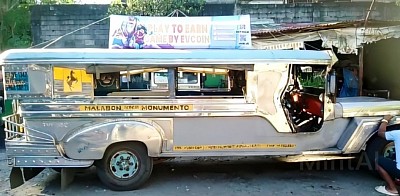KNOWLEDGE PAGE: Transit Advertising Philippines.
THE BEGINNING OF TRANSIT ADVERTISING IN THE PHILIPPINES.
Transit advertising in the Philippines can be traced back to the early 1900s. The first form of transit advertising was through traditional billboards, which were placed along roadsides, highways, and major streets to target pedestrians and motorists. These billboards often showcased products, services, and events.
However, it was not until the 1970s and 1980s that transit advertising began to evolve and expand. This was primarily due to the increasing popularity of buses as a mode of transportation in major cities like Manila. Bus companies started allowing advertisers to display advertisements on the exterior and interior of their buses, opening up a new avenue for brands to reach a wider audience.
The introduction of transit advertising on buses brought about the concept of bus wraps, where the entire exterior of the bus is covered with an advertisement. This proved to be an effective advertising medium as it provided a moving billboard that could capture the attention of pedestrians and motorists alike.
As time went on, different forms of transit advertising emerged. This included the installation of digital screens inside buses, allowing for dynamic and interactive advertisements. Advertisers also started utilizing taxis, jeepneys, trains, and even tricycles for transit advertising.
Today, transit advertising continues to thrive in the Philippines. With the rise of ride-hailing services like Grab and Uber, advertisers now also have the opportunity to target a specific demographic through these platforms. The use of transit advertising has become a popular and effective marketing strategy for brands in the Philippines, allowing them to reach a wide range of consumers while they are on the move.
TRANSIT ADVERTISING PHILIPPINES IN THE YEAR 2024 AND BEYOND.
In 2024, transit advertising in the Philippines is expected to continue to grow in popularity and effectiveness as more brands and businesses recognize the value of reaching a captive audience through buses, taxis, trains, and other forms of public transportation.
With the increasing urbanization and traffic congestion in major cities like Metro Manila, transit advertising offers a unique opportunity to target commuters who spend a significant amount of time traveling each day. This form of advertising allows brands to reach a diverse audience and generate high levels of visibility and brand awareness.
In 2024, we can also expect to see advancements in digital transit advertising, with the introduction of interactive displays, location-based targeting, and real-time tracking of ad performance. This will help advertisers better optimize their campaigns and reach their target audience more effectively.
Overall, transit advertising in the Philippines is set to play a crucial role in the marketing strategies of brands looking to make a lasting impression on consumers in a dynamic and competitive market.
TRANSIT ADVERTISING PHILIPPINES ONLINE AND OFFLINE INTEGRATION.
Transit advertising online and offline integration refers to the practice of combining traditional out-of-home advertising with digital marketing techniques to create a cohesive and integrated advertising campaign.
There are several ways to achieve this integration:
QR Codes and Mobile Apps: Transit advertisements can include QR codes or prompts for users to download a mobile app to engage with the brand online. Users can scan the QR code or download the app to access exclusive content, discounts, or promotions.
Social Media Integration: Transit advertisements can include social media handles or hashtags, encouraging commuters to engage with the brand online. This can include running social media contests or campaigns that drive user-generated content related to the transit ads.
Geotargeting and Retargeting: By utilizing location-based technologies, transit advertisements can target specific audiences in a particular area. Additionally, retargeting techniques can be employed to display online ads to users who have viewed or interacted with the transit ad offline.
Enhanced Tracking and Analytics: Integrating online and offline transit advertising allows for enhanced tracking and analytics. By leveraging digital techniques, advertisers can measure the effectiveness of their campaigns, track reach, engagement, and conversions.
Benefits of integrating online and offline transit advertising include:
Greater Reach and Engagement: By combining online and offline advertising, brands can reach a wider audience and increase brand exposure while also driving engagement and interactions online.
Enhanced Data and Insights: The integration of online and offline advertising allows for better data tracking and insights. Advertisers can measure the success and effectiveness of their campaigns in real-time, enabling data-driven decision-making.
Seamless Customer Journey: Integrating online and offline advertising creates a seamless advertiser journey. Commuters can transition from seeing a transit ad to engaging with the brand online, resulting in a cohesive experience that can increase brand loyalty.
Cost Efficiency: Combining online and offline advertising can be cost-effective as it leverages existing transit advertisements and utilizes digital channels that offer cost-efficient targeting options.
Overall, integrating online and offline transit advertising creates a holistic and effective marketing/advertising campaign that maximizes reach, engagement, and conversion opportunities for brands.
The essence of a jeepney advertising campaign.
The essence of a jeepney advertising campaign is to capture the vibrant and dynamic spirit of Filipino culture, using the iconic jeepney as a symbol of community, connection, and creativity. By incorporating colorful designs, catchy slogans, and engaging visuals, the campaign aims to showcase the unique characteristics of the Philippines and its people, while also promoting a sense of pride and identity among commuters and passersby. Through this campaign, advertisers can effectively reach a wide audience and establish a strong presence in the local market, creating a memorable and impactful brand experience.


